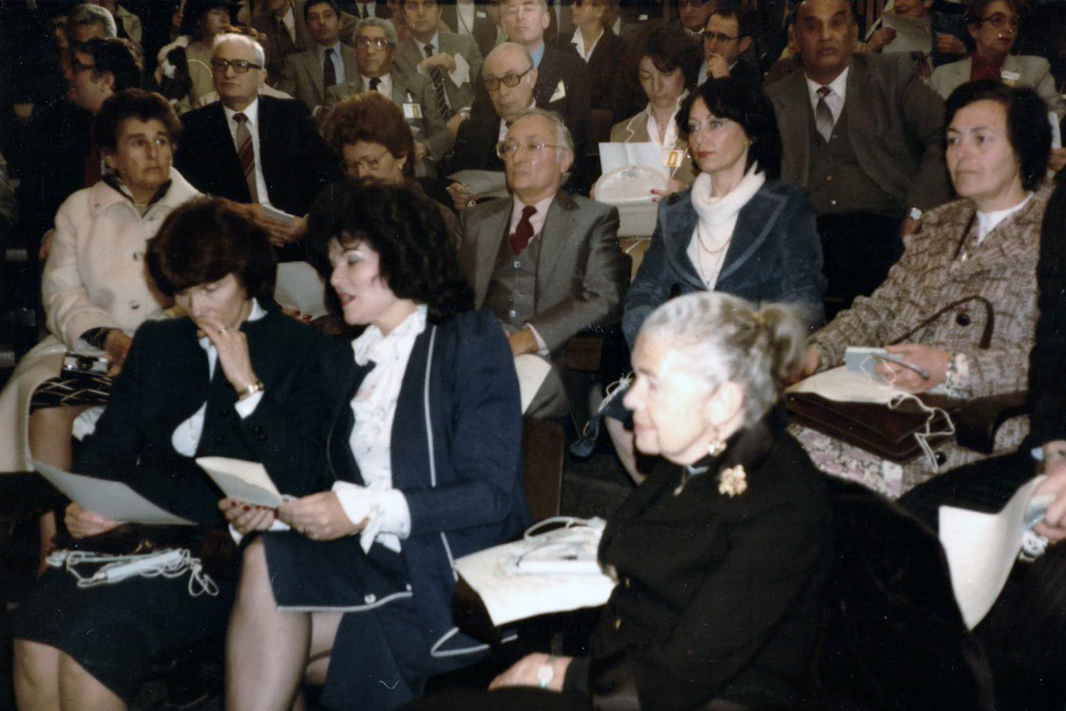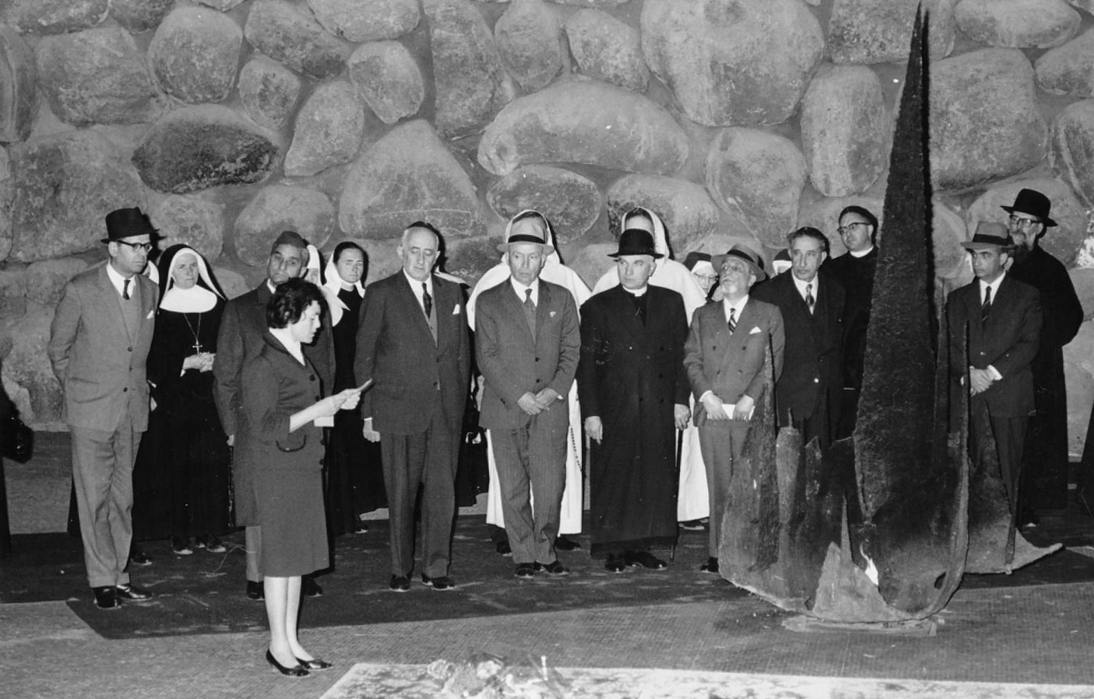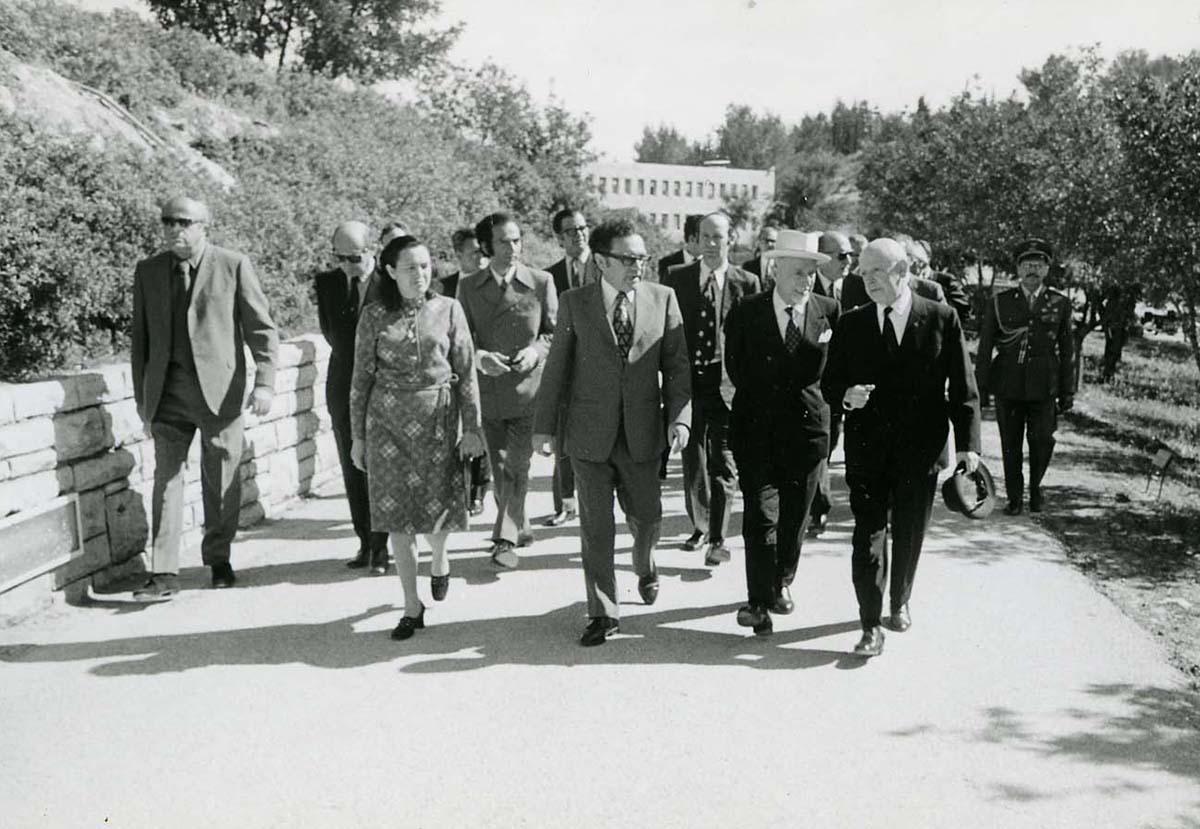







It isn't that common to sum up the history of an organization as robust and established as Yad Vashem with the experiences of one person. Yet, for 62 years, Clara Gini has been an integral part of the fabric of the World Holocaust Remembrance Center's work. She has seen it grow from a small organization following one man's vision to a world-renowned institution – responsible for commemorating the memory of the Holocaust and educating the public about its meanings and relevance today.
Gini, born in Alexandria in 1931, left Egypt after the State of Israel was founded and served as a librarian in the newly formed Israeli Defense Forces (IDF). Yad Vashem was not a shadow of its current size when, in 1956, she joined a few dozen staff working in its rented offices in downtown Jerusalem.
The vision for founding Yad Vashem came from Mordechai Shenhavi – who during World War II lived in Mandatory Palestine and heard what was happening to the Jews of Europe. He believed that a permanent memorial had to be established to them, and in 1953 the Israeli government passed the Yad Vashem Law enshrining the institution's four central pillars – Holocaust documentation, research, education and commemoration.
"The story of Shenhavi plays a central role in Yad Vashem is the most important thing to know to understand why Yad Vashem was founded," Gini said, "He was originally from Poland and lost his family in the war. He stood up for the idea that the government would start Yad Vashem as a way to remember those that were murdered.
"When I started working at Yad Vashem, we had barely any resources. The Library, Archives and lists of destroyed communities were located on Ben Yehuda Street [central Jerusalem]. The Bibliographical Department was in [the neighborhood of] Rehavia. In 1955, they laid the cornerstone on the Mount of Remembrance for the future site of Yad Vashem's campus. When they finished, there was only a single two-story building. There wasn't a museum or anything like that. Just a Library, Archives, the Hall of Names and the Righteous Among the Nations Department.
"As Yad Vashem's librarians, our mandate was to gather all the books and documents regarding the Holocaust and the Jews of Europe. That was our way of commemorating the Holocaust.
"The real change came when [current Chairman of the Directorate] Avner Shalev arrived in the early '90s. During his tenure, great changes were made, and continue to be made. He set about digitizing the institution, and he established the Museums Complex and International School for Holocaust Studies, as well as the Archives and Library Building."
Today Yad Vashem is considered a national treasure in Israel and is situated on the Mount of Remembrance a 35-acre campus in Jerusalem with almost 1,000 employees and around one million annual visitors. In addition, it houses the world's largest Holocaust-era Archives containing hundreds of millions of pages of documentation, including photographs, film, artifacts and testimonies which is all accessible to the public.
Despite all the advancements since its foundation Yad Vashem's mandate remains the same - to commemorate the murder of six million Jews by the German Nazis and their collaborators during WWII. Gini is one of many North African Jews who suffered during the Second World War as the Nazis almost conquered her home country.
"We were in Egypt during the war and I remember it well. We knew about what was happening in Europe; that they were hunting down Jews. But we didn't know about the concentration camps and the mass killings to the extent we know today. If the Germans had succeeded in entering Egypt then obviously something would have happened to the Jews there like in so many other places.
"In Egypt, we suffered from sirens throughout the night and we often had to go to the bomb shelter because of air raids. The Germans almost occupied Egypt but the British pushed them back and because of that we were saved."
However, the danger to the near-100,000 strong Egyptian Jewish community did not subside with the Allied victory in 1945. Shortly after the war's conclusion, there were outbreaks of violence against the Jewish community led by Egyptian Islamic and right-wing factions.
Despite the Egyptian king's condemnation of the acts of violence and meetings with the leaders of the Jewish community, things did not stay quiet for long. In 1948, the Egyptian army's catastrophic losses in Israel's War of Independence spurned more violence against the country's Jewish community – mass riots and targeted bombing attacks killed hundreds, and many Egyptian Jews began looking for a way to leave the country. Gini left with her family in June 1950 – just one of the 800,000 Jews who fled from Islamic countries to Israel following its declaration of independence.
"The relations between us and the Muslims in Egypt were excellent until 1948," Gini remembers. "We had a decent life there. We weren't millionaires, but things were good. We could buy what we needed and live how we wanted. Education, culture – we had everything.
"When the State of Israel was founded in 1948, there were riots against the Jews in Egypt. After we heard that there was a place in Israel accepting new immigrants, we came. It was forbidden to say we were traveling to Israel, so we told officials we were going to Italy.
"We stayed in camps the Israeli government had set up for new immigrants in the city of Brindisi in the south of Italy. We were there for around two-and- a-half months before we reached Israel. When they asked us where we wanted to go, we said Jerusalem. We were placed in a ma'abera [refugee camp] in Talpiyot. We were there for three years, and it was a very hard life. We didn't have running water, and food could only be bought with ration stamps. You couldn't buy whatever you wanted. Even clothes were rationed."
In addition to having been Yad Vashem's Reference Librarian – in charge of the Reading Room - Gini also worked as a guide for high-profile guests in the museum. She speaks French, Italian, English and Spanish in addition to Hebrew and Arabic.
Over the decades, Gini has guided many famous politicians, including French President Francois Mitterrand, Ivory Coast President Félix Houphouet-Boigny, Italian Foreign Minister Giuseppe Medici – as well as other dignitaries from Jordan, Argentina and England. One of her most touching moments was the chance to guide an Egyptian Jewish delegation that accompanied President Anwar Sadat on his state visit to Israel in 1979.
"When Israel made the peace treaty with Egypt, Sadat came to Yad Vashem. We weren't allowed to get close to him, so we just watched him from the windows of our building. But following him were a group of 30 Egyptian Jews, and they asked me to guide for them in Arabic.
"I know quite a few languages – I think that's the reason they kept me on here for so many years! I know Arabic from Egypt, Hebrew because I learned in a Jewish school, Spanish because my family is from Spain, French – also from school in Egypt – and also English and Italian. When I came to Yad Vashem I learned German and Greek as well."
Gini officially retired in 1996 – but at the request of Yad Vashem stayed on in a part-time position until 2018. In December 2018, at the age of 87, she finally stopped working. Despite this, Gini, mother of three and grandmother of ten, still finds time to volunteer at the institution twice a week.
"I gave a lot to Yad Vashem over the years. I guided in the Museum and the Library. I helped many, many people find books – researchers and doctoral students. I always assisted and advised them. There are many books here in Yad Vashem that have my name in them because I helped with the research.
"Often Holocaust survivors would come to loan a book, and then they would start to tell me what happened to them and their families during the Shoah. I couldn't listen to everyone… it is very painful – sometimes I would have tears in my eyes when hearing these stories. It was a constant reminder of how we have to commemorate those who were murdered in the Holocaust."









